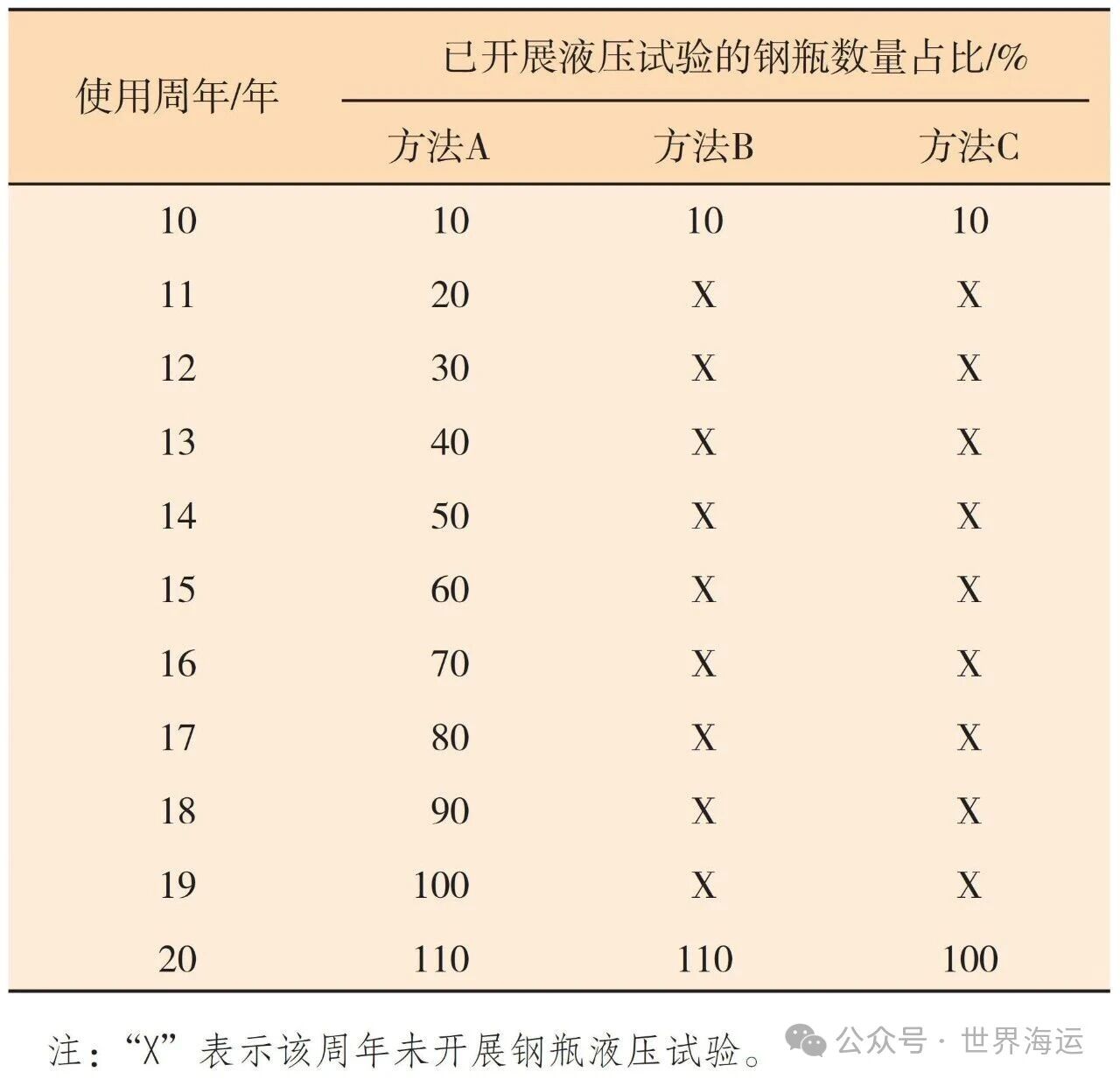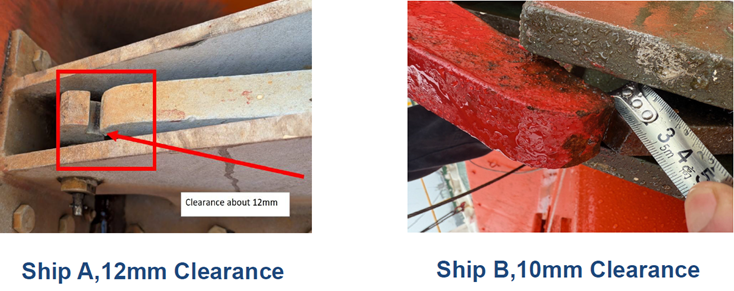2022年4月TOKYO-MOU地区PSC检查情况
数据来源于APCIS
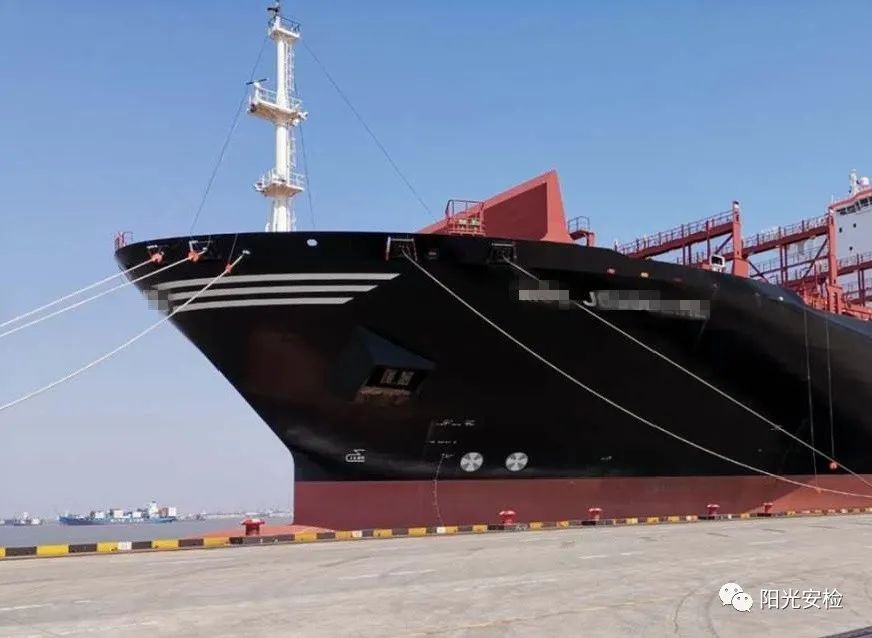
01 整体情况
1、基本检查情况
2022年4月东京备忘录地区共开展PSC检查1894艘次,发现缺陷3410项,滞留船舶51艘次,滞留率为2.69%。
2、船舶滞留情况
4月份11个国家/地区实施了滞留,澳大利亚滞留船舶艘次最多,共滞留了10艘次,韩国和俄罗斯各滞留了8艘次、中国和日本各滞留了7艘次。
滞留率最高的国家/地区依次是:澳大利亚,7.30%;巴布亚新几内亚,7.14%;俄罗斯,6.72%;韩国, 6.20%。
3、滞留缺陷类别分布
4月份共开出滞留缺陷178项,占据首位的是消防安全缺陷,排名二、三位的依次是救生设备和防污染。
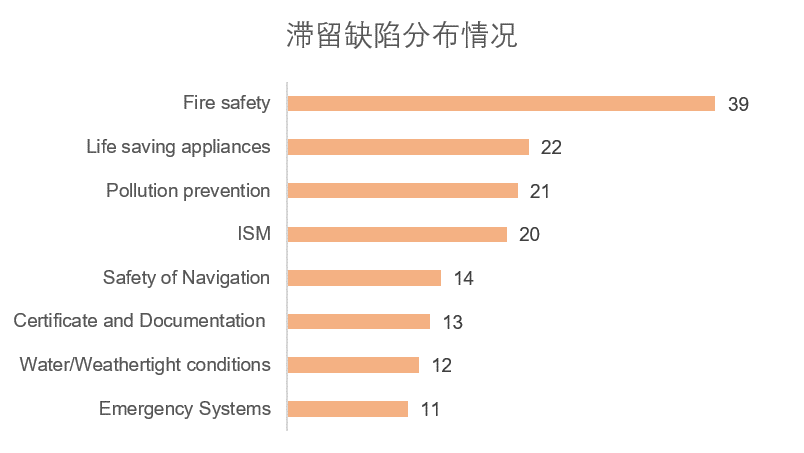
02 部分典型滞留缺陷
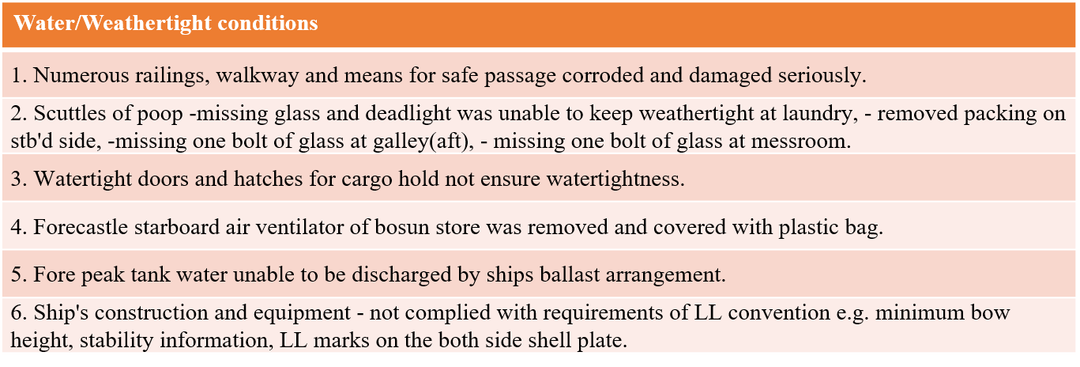


03 典型滞留缺陷分析
1、未按要求设置救生筏降落装置
缺陷描述:
Short of launching device to liferafts based on present arrangement of lifesaving appliance (no lifeboats, boarding height more than 4.5m ).
基于船上现有的救生设备的布置,缺少救生筏降落装置(未配备救生艇,登乘高度超过4.5米)。
公约原文:
S74-2/CIII/R15
Survival craft launching and recovery arrangements
1 Launching appliances complying with the requirements of Regulation 48 shall be provided for all survival craft except:
.1 survival craft which are boarded from a position on deck which is less than 4.5 m above the waterline in the lightest seagoing condition and which either:
.1.1 have a mass of not more than 185 kg; or
.1.2 are stowed for launching directly from the stowed position under unfavourable conditions of trim of up to 10° and with the ship listed not less than 20° either way.
.2 survival craft having a mass of not more than 185 kg and which are carried in excess of the survival craft for 200% of the total number of persons on board the ship .
分析:
该船未配备救生艇,配备了救生筏,但未配备救生筏降落设备。根据公约,该船救生筏设置位置距最轻载航行水线(登乘高度)超过4.5米,这些救生筏也不属于超过按船上总人数 200%所配备的救生艇筏范围的救生艇筏,因此该船设置的救生筏不属于设置降落装置的免除条件。
从S74-17(96修)起,救生艇筏降落和回收装置的设置要求变为第三章16条,并且增加了“.4 超过按船上总人数 200%所配备的救生艇筏范围的救生艇筏,且存放方式为可在纵倾至 10°和任何一舷 横倾至 20°的不利情况下直接从存放地点降落下水;或 .5 供连同海上撤离系统一起使用并符合规则第 6.2 节要求的救生艇筏,且存放方式为可在纵倾至 10°和任何一舷横倾至 20°的不利情况下直接从存放地点降落下水。”这些条款中也不包含适用于该船的免除条款。
2、通向救生设备的通道被阻塞
缺陷描述:
Passage to the lifebuoy (3 pcs) on the boat deck obstructed with cars.
通向救生艇甲板救生圈(3具)的通道被汽车阻塞。
公约原文:
S74-17/CIII/R20.2
Operational readiness
Before the ship leaves port and at all times during the voyage, all life-saving appliances shall be in working order and ready for immediate use.
3、空气管关闭装置故障
缺陷描述:
Several ballast tank air vents closing arrangements defective - float disc damaged and rubber gasket missing.
几个压载舱空气管关闭装置故障,浮子盘损坏,橡胶垫片缺失。
公约原文:
LL66/ANI/R20
Air pipes
(1) Where air pipes to ballast and other tanks extend above the freeboard or superstructure decks, the exposed parts of the pipes shall be of substantial construction; the height from the deck to the point where water may have access below shall be at least 760 mm on the freeboard deck and 450 mm on the superstructure deck.
(2) Where these heights may interfere with the working of the ship, a lower height may be approved, provided that the Administration is satisfied that the closing arrangements and other circumstances justify a lower height.
(3) Air pipes shall be provided with automatic closing devices.
(4) Pressure-vacuum valves (PV valves) may be accepted on tankers.
分析:
根据国际载重线公约要求,干舷甲板上的压载舱或其他液舱空气管高度自甲板至水可能从管口进入空气管内算起至少应为760mm,结构应坚固,并设有自闭装置等。本例中,从多个空气管内的浮子盘损坏和橡胶垫片缺失描述来看,PSC检查过程中对甲板空气管进行了拆解检查,不难看出PSC检查对空气管的重视程度不同一般。另外,FSC也同样高度重视空气管方面缺陷的检查。据不完全统计,浦东海事局最近三年有关空气管类单项滞留缺陷达55项,其中典型缺陷如下:主甲板两舷边舱大量空气管关闭装置损坏、前压载舱空气管关闭装置脱落、干舷甲板两舷的所有空隔舱空气管均无合适的关闭装置、主甲板左右舷多个空气管锈烂破损/自闭装置卡阻、主甲板前部右侧一个边舱空气管关闭装置灭失、干舷甲板右侧一个货舱空气管被改装,导致该空气管无法自动关闭、主甲板左右两舷边舱空气管关闭装置故障、主甲板左右两舷压载舱部分空气管自闭装置内积锈严重、船舶主甲板两舷重油燃油柜/左舷重油日用柜/轻油日用柜空气管断裂、主甲板右舷四根边舱空气管浮球卡死,等等。由此可见,无论国际航行还是国内航行船舶,均应重视空气管的维修保养工作,避免因此类缺陷被滞留。
04 部分缺陷
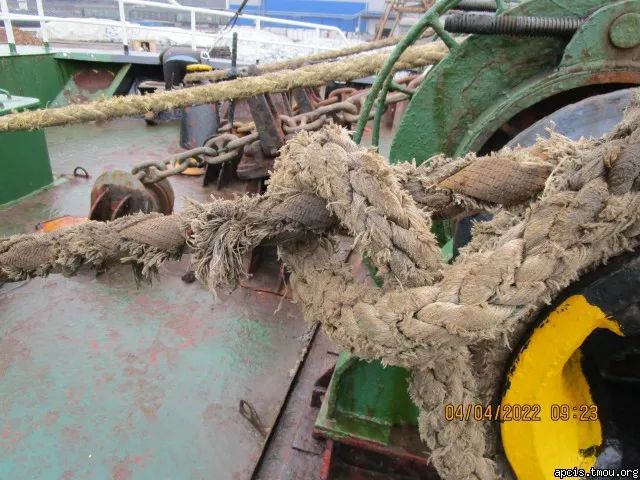
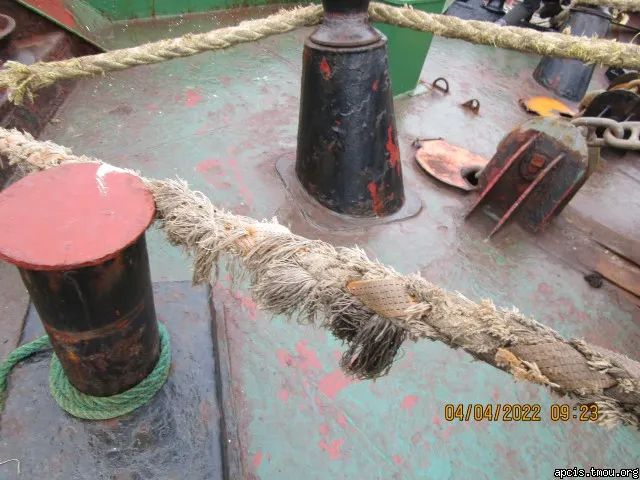
1. All mooring ropes shown signs of wear and tear.
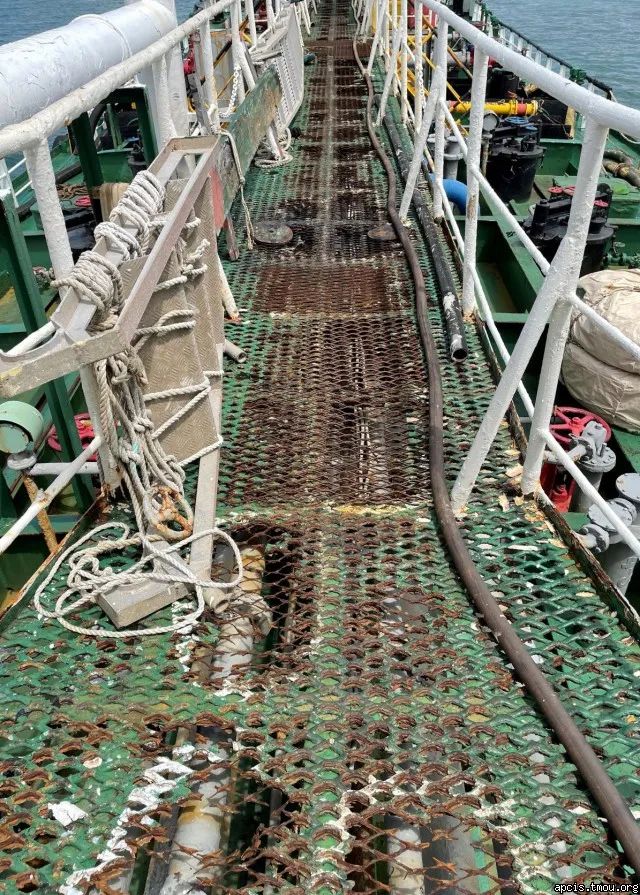
2. Safe access platform gratings to the bow was wasted and holed substantially.
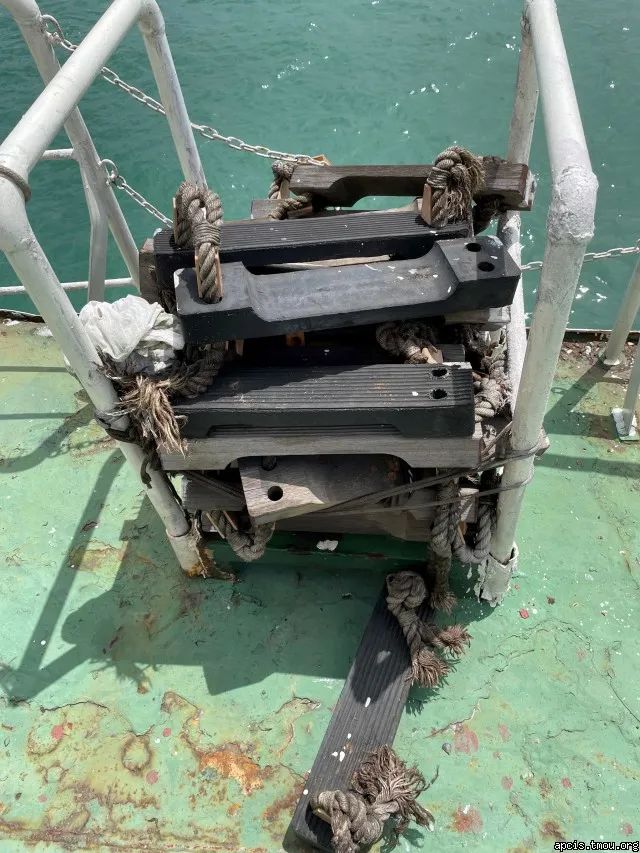
3. One transferable embarkation ladder was provided at boat deck and corroded with broken side ropes.
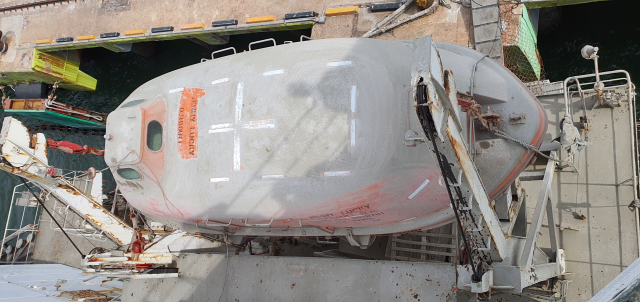
4. Both lifeboats not ready for immediate use.




